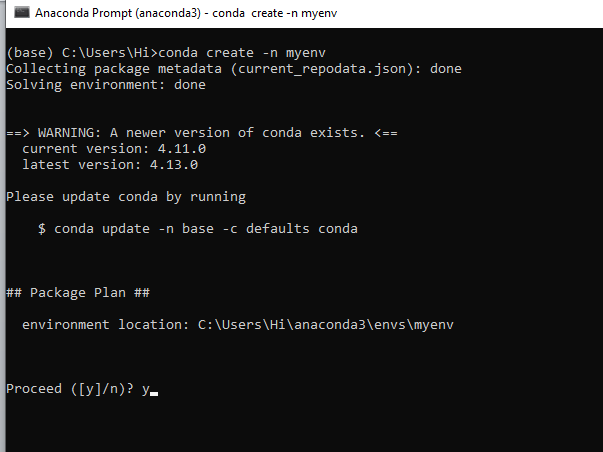

- Anaconda create environment from requirements.txt install#
- Anaconda create environment from requirements.txt full#
- Anaconda create environment from requirements.txt software#
- Anaconda create environment from requirements.txt code#
- Anaconda create environment from requirements.txt free#
Python in a child environment can't find the necessary OpenSSL library.Ĭonda itself includes some special workarounds to add its necessary PATHĮntries. HTTP or SSL errors are common errors when the If environments are not active, libraries won't be found and there Instead, Windows relies on a dynamic-link library search order. The Windows library loader does not support the concept of librariesĪnd executables that know where to search for their dependencies Windows is extremely sensitive to proper activation. So on Windows, run: c:\Anaconda3\Scripts\activate base in If you receive this warning, you need to activate your environment.

To activate this environment please see https : // conda. Warning : This Python interpreter is in a conda environment, but the environment has not been activated.

To create this spec list as a file in the current working
Anaconda create environment from requirements.txt free#
com / pkgs / free / osx - 64 / readline - 6.2 - 2. com / pkgs / free / osx - 64 / python - 3.5.2 - 0. com / pkgs / free / osx - 64 / openssl - 1.0.2 h - 1. # This file may be used to create an environment using: # $ conda create -name -file # platform: osx-64 https : // repo. Makes it so that your command prompt is now prefixed with the activeĮnvironment’s absolute path rather than the environment’s name.Īfter activating an environment using its prefix, your prompt will
Anaconda create environment from requirements.txt install#
Specifying an install path when creating your conda environments
Anaconda create environment from requirements.txt full#
You’ll generally need to pass the -prefix flag along with theĮnvironment’s full path to find the environment. There are a few things to be aware of when placing conda environmentsĬonda can no longer find your environment with the -name flag. If you keep all of your environments in your envsįolder, you’ll have to give each environment a different name. Subdirectory is that you can then use the same name for all yourĮnvironments. The required software, is contained in a single project directory.Īn additional benefit of creating your project’s environment inside a It makes your project more self-contained as everything, including To store all of the packages and dependencies installed in our environment, we can run the following command.It makes it easy to tell if your project uses an isolated environmentīy including the environment as a subdirectory. Note: Before creating the requirements.txt file, we need to ensure we have activated our Conda environment. In this Answer, we will explore how we can create the requirements.txt file to store the dependencies and install them. In this case, we need to share the exact packages and dependencies we used in our system with our team. The reason was that the Python and Django versions the team installed on their systems were not the same as the version in which we were writing the code, and thus dependencies issues emerged.
Anaconda create environment from requirements.txt code#
Our team pulls the code in their local systems and tries to run it, but the code does not work on their local systems. After a month of hard work and testing, we have finally completed the back end and pushed the code on GitHub. We use Conda as our package and environment manager to create an environment in which we install Python 3.10.1 and Django 4.2.3. Our task is to build the back end of the web application using Python's Django framework. Consider that we are working on a project along with our team. Why do we need to share the environment? For that, let's take a look at a possible real-world scenario. What is the need for the requirements.txt file? With the help of Conda, developing teams can share their development environments with one another using the requirements.txt file. It can easily install, uninstall, update, and manage packages in a virtual environment using simple commands.

Anaconda create environment from requirements.txt software#
Conda is an open-source package and environment Collection of tools and packages for software development management system.


 0 kommentar(er)
0 kommentar(er)
